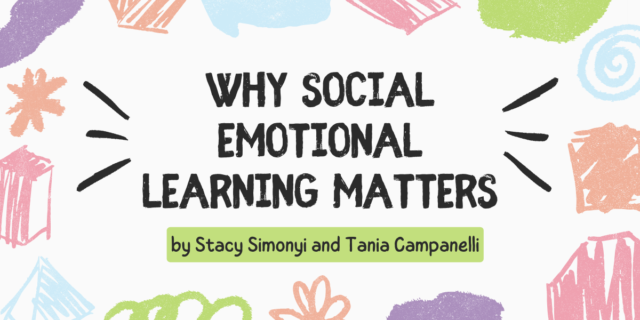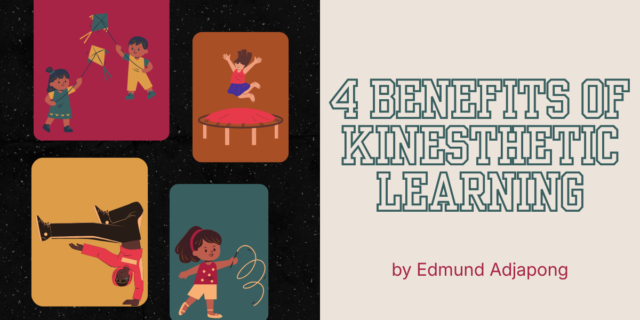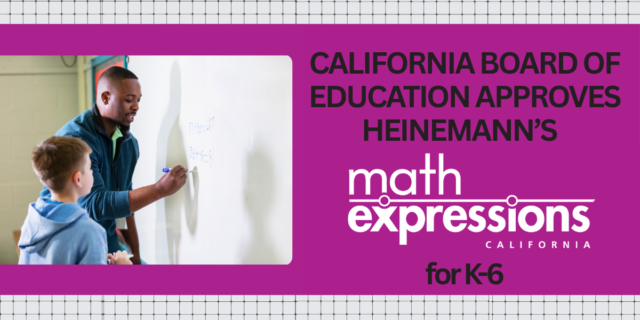
In the new book, A Novel Approach, Kate Roberts offers a practical framework for creating units that combine whole-class novels and independent reading to truly help students grow as readers and build classroom community.
Here, Kate walks us through her new book, which brings the power of challenging, whole-class novels together with the tennants of reading workshop.
To learn more about A Novel Approach and download a sample chapter, visit Heinemann.com.
Kate Roberts is a national literacy consultant, author, and popular keynote speaker. She taught reading and writing in Brooklyn, NY and worked as a literacy coach before joining the Teachers College Reading and Writing Project in 2005, where she worked as a Lead Staff Developer for 11 years. Kate is the co-author (with Christopher Lehman) of the popular Falling in Love with Close Reading, and of DIY Literacy (with Maggie Beattie Roberts), along with two Heinemann Unit of Study books on Literary Essay. Her work with students across the country has led to her belief that all kids can be insightful, academic thinkers when the work is demystified, broken down and made engaging. To this end, Kate has worked nationally and internationally to help teachers, schools, and districts develop and implement strong teaching practices and curriculum. Her blog, indent, is a touchstone for teachers and she uses social media, particularly Twitter (@teachkate), to help build community and solve problems among her educator peers.
Video Transcript:
Hi everyone. I'm Kate Roberts. I am the author of A Novel Approach, through Heinemann, that's coming out very soon. And I got my advanced copy yesterday, and I'm super excited, so I escaped my family to come up to this very bare room to introduce it to you quickly before it hits the shelves and internet. I wanted to give a quick overview so that you knew what's inside of it, if it might help you, or your teachers or your students or your district to think about the same question that I struggled with, and still struggle with, when thinking about books and kids and school.
And the question is this: What would it mean to teach a whole class novel, but to still hold on to some of the methods and philosophies and structures of a reader's workshop? What would it mean to teach a whole class novel, but still keep kids at the center? To think about their abilities, their interests, their needs, and to have that be the guiding force in the units that we teach? So that's what this book attempts to explore I guess is the best. I like some of the answers that we came up with, and I'm excited to share them with you.
So the book starts off with an introduction. And in the introduction, I really try to give a very fast overview of like the gist of the book. Like what does this book say you should do, say, when combining whole class novels and a reader's workshop philosophy. So that's a good place to go to kind of look at a quick glance of what I'm talking about here so you enter into the book with a sense of what I might be saying. And then chapter one, which I called You Can Have It Both Ways, which might be a little bit of a bold statement, so really in person, I would probably say you might be able to have it both ways, but we went there, so you can. You can have it both ways.
And what this chapter really tries to do is to dive into the argument a little bit between whole class novel teaching and reader's workshop teaching, or independent reading, or skills based instruction. So it's a chapter that mostly is about ideas. I try to look at what the positive and negative aspects of whole class novel teaching have been, at least traditionally. I try to look at some of the positive and negative aspects of reader's workshop when it's being implemented as well, and kind of weight those two out, and then look for common ground between them.
But then I go to chapter two, and we get into the work, and chapter two's called Start with the Students. And it looks at how we identify the skills our students need to improve upon as readers. Yes, of any text, although we're going to start teaching it in this whole class novel. So there's some guidance on how to assess what skills students need, some guidance on how to identify skills, what skills are, what methods are there for teaching them, that kind of thing. And then, in chapter three, which is about choosing the whole class novel that you're going to use, that chapter is called, Look Beyond the Usual Suspects.
I do make a pitch to leave the book room of your high school or your middle school or your elementary school and to think about having your book choice potentially be a little more flexible, dynamic, student-centered, student-chosen, so that we aren't faced with sort of teaching the same books every single year, although you might also do that sometimes as well. But that we just look at that question, "Am I choosing the whole class novel I'm going to teach my kids thoughtfully? Or am I kind of grabbing the book that's available to me?" Which I know that I've done in the past.
Chapter four then looks at mapping out the unit. So it really tackles the idea of pacing. One big argument I, and many others make about whole class novels is that they tend to get too long because we tend to focus mostly on the content of the book as opposed to helping kids to read the book more powerfully themselves. So chapter four makes a big pitch for shortening the length of a whole class novel unit, and gives some structures and some tips, some ways to do that, because it's all too easy to say, "Hey, that ten week unit you did, just shorten it down to three weeks, all right? Cool?" But I find that for myself, and for the colleagues I've worked with, that actually can be a quite painful experience, and there's some things to think about so that it's not too short, not too long, that we find that kind of just right fit.
Inside that chapter, there is a sample map of what a unit looks like. And there's also some work of how do we identify the strategies our kids are going to need in order to do the skill that we're going to teach. Chapter five then is called, Delight in the Details. And chapter five is all about the unglamorous work of daily planning. So it looks at methods of teaching and saying like, "Okay, if you have the skill you're focusing on, the book you want to teach, you've mapped out your unit, you know it's going to take about three weeks, you even have some strategies that you want to teach to get at that skill, all right, what does the day look like?"
And it looks mostly at two main methods, read aloud and mini lesson, and gives some pretty practical, I hope, advice, or guidance in planning lessons in those ways. Like, "How can I plan a mini lesson? How can I plan a read aloud?" And I will tell you now, spoiler alert, that my argument here is that while I might have some lessons that are perfect and beautiful and wonderful and I spent 45 minutes planning, I think there is great power and great need for me as a teacher to be able to plan a perfectly mediocre mini lesson in like 10 minutes. And so that's kind of the focus of this chapter, is not how do you plan perfect lessons that you should get observed on, but how do you plan lessons that are going to do the job pretty well and hopefully not alienate your kids?
Deliver the instruction in an efficient, clear way, so that you can get to the real work, which is chapter six. And that is how do I differentiate the work in my class? So differentiating is a word that's used a lot. I think sometimes it's not over-used, but I think that we've gotten away from sort of the heart of what it could mean anyway for us. If I think about the worst case scenario, I have five classes of kids, 40 minutes, 45 minutes per class. It's going to be really hard for me to get to every single kid in a meaningful way repeatedly across my quarter. So this book looks at what are some manageable, sustainable ways of getting kids to be on paths that they need to be on without you necessarily needing to be up until midnight every night planning? So hopefully that's helpful.
In both chapter five and chapter six, there are video clips on the margins that I had the honor and privilege to get to teach in a couple classrooms, one middle school classroom and one high school classroom. And the clips are just very specific. So they're short. You get just one part of a lesson to look at it in isolation a little bit. So those start in chapters five and six. I'm excited to offer that to you. Please don't mock me too much for my videos. And then we get to chapter seven, which is about addressing the challenges of teaching a whole class text.
So how do we teach the kids for whom we know this text is significantly difficult? How do we teach the kids who are having a pretty easy time with the work that we're throwing out there at the class? How do we keep them engaged and help keep them interested and get their minds working a little bit when they're already pretty good at what we're offering up? So it's a little bit of like what are the lessons we would teach those small groups or those conferences that we set up in chapter six? Then chapter eight is all about really writing about reading.
I think that if you think of chapter one through seven as being how do I set up this good curriculum? Chapter eight is about how do we hold kids to that curriculum a little bit? Like what is it that the kids are going to do to practice these lessons that I've taught so that I know that they're working and giving me feedback on what they need? But again, the effort there is that the writing about reading they do is both sustainable for me to look at and to get a sense of, but also sustainable for them and isn't too labor intensive to kind of ... I don't want to ruin their desire to read the book because I need a stack of post its.
I have to have kind of a nice balanced view of what it is I'm collecting from my class. Chapter nine, in some ways it almost should become book two, because all up until now I've been focused mostly on the whole class novel, and in chapter nine, we start shifting to, "Okay, that three weeks is up. The whole class novel part is done. Now what we want to do is to transfer all that teaching we did in the whole class novel." So say we did The Outsiders in seventh grade, and the focus was characterization. How now are the kids going to practice that same skill of characterization in a book that they choose, and probably a book that they're going to read with some peers so that they're not all alone.
So it looks at how to develop book clubs. It's a pretty brief view, but hopefully very practical way of getting book clubs up and going in your classrooms, and how to transfer the work you did from the whole class novel into those clubs so that the kids can practice it. Last but not least, chapter ten is called Celebrate Achievements. And it's basically looking at what we do at the end of this unit. How do we both celebrate, but how do we also assess? What are we going to get at the end? What are the kids going to make that helps represent what it is that they've learned in this chunk of time?
And I basically break it down into three ways. One, we can do a traditional sort of essay, and I look at the pros and cons of that. Two, we can make something, like a project. And three, there can be a kind of test, quiz, assessment. And I look at what ... I just go ahead and embrace the words test and quiz, although you can put them under the umbrella of assessment too. But I look at that as what would it look like to give a test in this structure? Like what would it look like if I want to give a quiz on the strategies I taught you this week for interpreting a text that might actually give me some good information about where the kids are, and might get the kids to step up and perform those skills a bit?
And then there is an epilogue that kind of sums things up a bit, and some appendices and stuff like that that can help out, especially links to the videos. Things like that. So that's the book in essence. I am very excited to share it with you and to continue the conversation about whole class novels, student-centered teaching, and choice.




